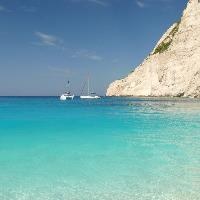(COPENHAGEN) – 85% of swimming sites across Europe monitored in 2019 met the EU’s stringent ‘excellent’ quality standards, according to this year’s European bathing water quality assessment published on Monday.
The results published by the European Environment Agency (EEA) and the European Commission give a good indication where swimmers can find the best quality bathing waters. However, with restrictive measures due to the coronavirus outbreak still in place across Europe, members of the public are advised to seek updated information from local and national authorities and beach operators about safety measures at bathing sites.
To help Member States gradually lift travel restrictions and allow tourism businesses to reopen, after months of lockdown, while respecting necessary health precautions the Commission presented on 13 May a package of guidelines and recommendations.
“Regular monitoring and assessment of bathing water are essential for ensuring that we maintain the already very high quality across Europe and, where needed, we take effective measures to address water pollution, “said the EEA’s Executive Director Hans Bruyninckx: “Cleaner bathing waters do not only benefit our own health and well-being but also the health of the environment.”
Almost all of the 22,295 bathing water sites monitored last year across Europe (of which 21,981 were in the then 28 Member State EU including the United Kingdom) met the minimum quality requirements according to the briefing. Albania and Switzerland also monitored and reported on the quality of their bathing water sites and their data are included in the assessment.
Specific results showed only minor drops in sites meeting the highest ‘excellent’ standards, and the minimum ‘sufficient’ quality requirements set out in the EU’s Bathing Water Directive. ‘Excellent’ quality bathing water sites across Europe stood at 85%. Those meeting the least minimum ‘sufficient’ standing stood at 95%. The briefing also found that the quality of coastal swimming sites is better than those located inland.
The number of overall ‘poor’ rated sites stood at 1.3% of all sites monitored in Europe last year. That figure has not fluctuated much since 2013, when the figure stood at 2%, reflecting the long-term improvements in bathing water quality in Europe.



